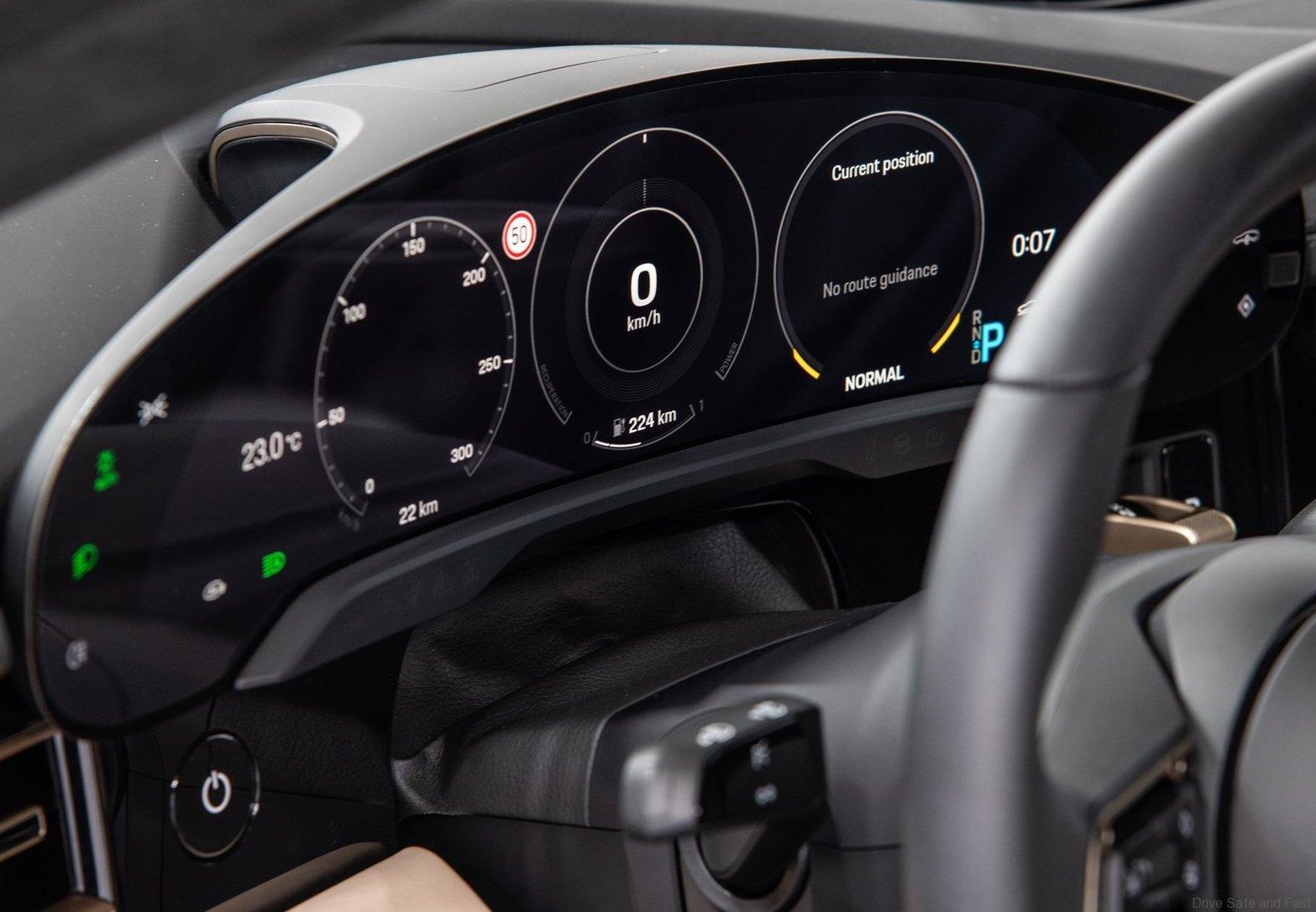Porsche’s first all-electric sports car is setting standards in interior design.
Meeting the Porsche Taycan in person was a sense of occasion. A sense that we have missed the last few years doing this job as new cars coming from various factories around the world have been exciting but none have been ground breaking like this car. At least for us!








The design needs a whole article for itself and before we get to that we have to share the cabin experience with you.
Classic design features
Typically, Porsche. This is why the Taycan dashboard was designed to mimic the look of the 911 which has always been for drivers and with a low sporty seating position like the 911.
The original air-cooled 911’s cleanly styled dashboard from 1963 was the inspiration. The stated goal was to bring it into the present day. The cockpit signals the start of a new era with its clear structure and a completely new construction. It is clearly driver-focused. The instrument panel has a clean, minimalist and ultra-modern design, and operating the controls is quick and free from distractions.
Curved instrument instead of a rectangular I-Pad
The free-standing, curved instrument cluster forms the highest point on the dashboard. It is clearly focused towards the driver and ensures that everything that is needed for driving is in clear view up front. No need for heads up display ro any fancy gimmicks to see across the front nose of the Taycan.
The innovative instrument cluster consists of a curved 16.8-inch screen with the rounded look that’s typical of Porsche sports cars. A cowl has been omitted, which ensures a slim and modern appearance in the style of high-quality smartphones and tablets. Real glass and a vapour-deposited, polarising filter give anti-reflective properties.
4 display modes for the instrument cluster
Classic mode (power meter) evokes the rounded instruments typical of Porsche. This display delivers information that’s clearly arranged information, allowing for fast readability. A power meter replaces the rev counter in the middle instrument. Map mode replaces the central power meter with a map layout. Full Map mode intentionally omits the round instruments in favour of a navigation map displayed across the full display. The Pure mode displays only essential driving information such as speed, traffic signs and navigation using a minimalist arrow.
Just like with the 911
There are also small, touch-control fields at the edges of the screen for operating the light and chassis functions. The instrument cluster is therefore wider than the steering wheel and reminiscent of the iconic original 911.
The steering wheel has a light appearance, with two models to choose from. In addition to the basic version, which can be customised with coloured inserts as part of the accent package, Porsche also offers a GT sports steering wheel option. It has a distinctive design with visible screw heads and features a typical Porsche round mode switch which can be used to select the various driving modes.
The upper and lower sections of the dashboard stretch across the entire width of the vehicle in the shape of a wing. A central 10.9-inch infotainment display and an optional passenger display are combined to form an integrated glass band in a black-panel look, thereby blending in visually with the interior.
Sport seats that hug you
The revise seat design is powered like in the 911 and Panamera and the torso hugging sides are powered to ensure a comfortable drive even on long journeys like we experienced daily. The seat height allows for tall drivers and when shorter drivers like us get in, there is ample adjustments to get good outward vision.
Two fixed rear seats keep rear passengers happy and there are ample cooling vents to keep them happy on interstate drives.
Time to order you very own Porsche Taycan as the delivery timeline is 2020 August and the numbers are adding up as you read this.














what an amazing interior, hope to ride something like this soon